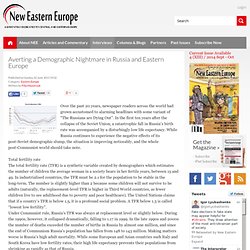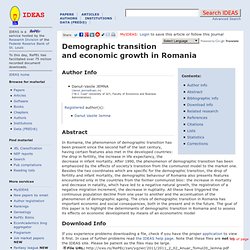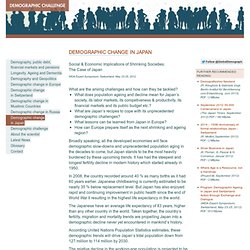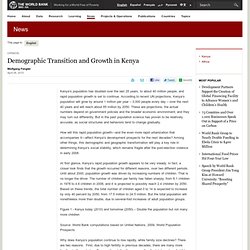

How parental leave rights differ around the world. As in so many things, Scandinavia got there first.

Following today's government announcement, parents in Britain will, from April 2015, be able to share 12 months of leave after the birth of a child; in Sweden, they have have enjoyed that right since 1974. While gaining ground in Europe, the shared parental leave policy, which aims to help women return to the workplace and men to become more involved in caring for new babies, is unknown in much of the world. Some large countries – China and India, for example – allow no leave, paid or unpaid, for fathers at all. Under the UK plan, new mothers must take the first two weeks but will be able to transfer as much of the rest as the couple choose to their partner – or each parent could take 25 weeks together.
The first 39 weeks will be paid at the statutory minimum. UNHCR:The UK and Asylum. What is the difference between a refugee and an asylum seeker?

What are refugees? A refugee is a person who: 'owing to a well-founded fear of being persecuted for reasons of race, religion, nationality, membership of a particular social group, or political opinion, is outside the country of his nationality, and is unable to or, owing to such fear, is unwilling to avail himself of the protection of that country' FAMILY PLANNING: A GROWING EMPOWERMENT OPPORTUNITY FOR WOMEN IN AFGHANISTAN. Date: 11/03/2013 Use of modern family planning methods in Afghanistan has doubled from 10 percent in 2003 to 20 percent in 2012.

Still much more needs to be done in order to achieve the Government of Afghanistan target to increase the Contraceptive Prevalence Rate to 40% by 2016. UNFPA Afghanistan supports the Ministry of Public Health to take steps to meet the family-planning needs and to assist couples and individuals to achieve their reproductive goals and give them the full opportunity to exercise the right to have children by choice. Challenges-and-Successes-in-Family-Planning-in-Afghanistan.pdf. FAMILY PLANNING: A GROWING EMPOWERMENT OPPORTUNITY FOR WOMEN IN AFGHANISTAN. Phases of Singapore's Demographic Development Post World War II. From a population of 1 million in 1950, Singapore's resident population, comprising citizens and permanent migrants, has grown more than three and a half times to 3.7 million in 2009 (5.0 million, if foreigners with permits1 are included).

Singapore's demographic change from the late 1940s can be differentiated into three phases characterised by distinct population trends and socioeconomic developments, with a fourth phase now emerging. Throughout Singapore's various demographic phases, direct measures had been put in place to modify fertility behaviour. Some have contended that the anti-natalist policies carried out by the Singapore Family Planning and Population Board played an important role behind our sharply falling fertility,2,3 and some have noted that Singapore was seen as a "role model for government fertility control" programmes4 in the days when the global attention was on reducing fertility for the sake of sustainable development. Averting a Demographic Nightmare in Russia and Eastern Europe. Over the past 20 years, newspaper readers across the world had grown accustomed to alarming headlines with some variant of “The Russians are Dying Out”.

In the first ten years after the collapse of the Soviet Union, a catastrophic fall in Russia’s birth rate was accompanied by a disturbingly low life expectancy. While Russia continues to experience the negative effects of its post-Soviet demographic slump, the situation is improving noticeably, and the whole post-Communist world should take note. Total fertility rate The total fertility rate (TFR) is a synthetic variable created by demographers which estimates the number of children the average woman in a society bears in her fertile years, between 15 and 49.
In industrialised countries, the TFR must be 2.1 for the population to be stable in the long-term. Demographic transition and economic growth in Romania. Share: MyIDEAS: Login to save this article or follow this journal Powered by Translate Author Info.

The applicability of the Demographic Transition Model. Demographic changes to boost Brazil's investment appeal. In Brazil, we believe a demographic and social phenomenon is underway as a growing proportion of the population enter the most economically active period of their life.

Some economists have termed this shift in the population profile of Brazil as a demographic bonus because it is likely to strengthen the dynamics of the domestic economy and further boost the country's development. A recent study by the University of Minas Gerais concluded that Brazil has the potential to grow GDP 2.5% per year as a result of this demographic bonus. This scenario on its own would increase the size of the economy to $3.3 trillion by 2030, about 50% more than what it is today. The Demographic Challenge > Demographic change in Japan.
Social & Economic Implications of Shrinking Societies: The Case of Japan WDA Expert Symposium, Switzerland, May 23-25, 2012.

What are the arising challenges and how can they be tackled? IransFamPlanProg_Eng.pdf. Policy_Brief_English_unfpa_web.pdf. Demographic Transition and Growth in Kenya. Kenya’s population has doubled over the last 25 years, to about 40 million people, and rapid population growth is set to continue.

According to recent UN projections, Kenya’s population will grow by around 1 million per year – 3,000 people every day – over the next 40 years and will reach about 85 million by 2050. These are projections; the actual numbers depend on government policies and the broader economic environment; and they may turn out differently. But in the past population science has proven to be relatively accurate, as social structures and behaviors tend to change gradually. How will this rapid population growth—and the even more rapid urbanization that accompanies it—affect Kenya’s development prospects for the next decades?
Among other things, this demographic and geographic transformation will play a key role in determining Kenya’s social stability, which remains fragile after the post-election violence in early 2008. The Demographic Transition Model. Population Pyramids. Demographic Transition Model. Changes in population charactertistics - 3 - Ace Geography. A-level Geography Population Revision - Population models. It is possible you will be asked about the consequences of Population growth.

Firstly, it is important that you appreciate two contrasting viewpoints. The first is from Malthus, who was writing at the end of the 18th century.
The Challenge of Attaining the Demographic Dividend. Summary (November 2012) Policymakers, researchers, and other stakeholders optimistically discuss the demographic dividend. Most view the benefits as imminent and within grasp. Fertility statistics in relation to economy, parity, education and migration. Towards a 'baby recession' in Europe? Statistics in focus 13/2013; Author: Giampaolo LANZIERIISSN:2314-9647Catalogue number:KS-SF-13-013-EN-N Figure 1: Number of countries by year-on-year change of GDP and TFR,2007-2011Source: Computation of the author on Eurostat data (nama_gdp_k)(demo_find) Figure 2: Number of live births in Europe, 2000-2011Source: Computation of the author on Eurostat data (demo_find) Table 1: Simulated number of live births in 2009-2011 according to various scenariosSource: Computation of the author on Eurostat data (demo_find)(demo_pjan)
Nobody Home: The Countries Where Population Is on the Decline - TIME Special Report: The World at 7 Billion. The global population may have increased by an unprecedented one billion in the past 12 years, but not all parts of the planet are sharing in the people boom. In fact, some nations are in the midst of the just the opposite: large-scale population decline. They are mostly former Soviet Republics and Eastern European countries. According to the latest U.N. count, of the 24 nations that registered population falls between 2005 and 2010 only Puerto Rico, Germany and some small island nations were not from this region.
The Republic of Moldova — with a dwindling population of 3.6 million sandwiched between larger neighbors Ukraine and Romania — tops the global list of big countries' negative growth, with a 1.1% average annual drop over the five-year period. Distilled Demographics: The Birth Rate. Hans Rosling: Global population growth, box by box. Our organization. Realizing population and development commitments beyond 2014. Is population growth out of control? The respected broadcaster and naturalist, Sir David Attenborough, told the BBC recently that population growth was "out of control" - but one expert says the number of people on the planet could peak in 40 years. Who should we believe? "The world's population is increasing out of control," Sir David told the BBC's Today programme. "Since I first started making programmes 60 years ago, the human population has tripled.
" Two striking claims. Let's take the second one first - that the world's population has tripled in 60 years. Demographic Winter. Falling Birth Rates? Demographics, ageing population. Impact consumers, brands, marketing speaker. Thomas Malthus: Theory of Population. Thomas Robert Malthus was a British economist and a demographer, whose famous Theory of Population highlighted the potential dangers of overpopulation. Malthus put forth his ideas in six editions of his famous treatise 'An Essay on the Principle of Population'. His thinking took shape under the influence of the optimistic ideas of his father and his friends especially Rousseau, for future improvement of the society. In the first edition of his treatise, Malthus put forth his views that opposed the belief of scholars like Marquis de Condorcet and William Godwin who were optimistic about population growth in England. During the Industrial Revolution, England experienced a steep increase in its population.
In his book "The Enquirer", William Godwin promoted population growth as a means for human beings to attain equality. List of sovereign states and dependent territories by fertility rate. World Fertility Data 2008: Data. GraphPad Prism User Guide. Human Population. The World Factbook. How the Total Fertility Rate Impacts a Country's Population.
Crude Birth Rate (CBR) and Crude Death Rate (CBR) The Migration Observatory. Myanmar's census falls 9 million short of estimate.